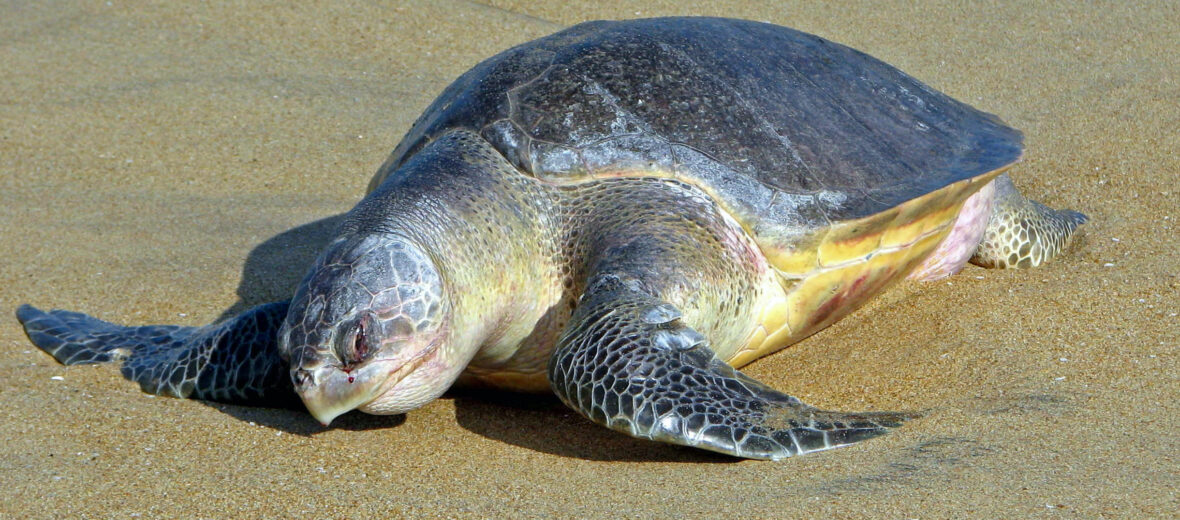
The olive ridley turtle, aka Pacific ridley sea turtle, is the 2nd smallest known sea turtle. The Kemp’s ridley being the smallest. These turtles are the most abundant sea turtle in the world. They’re named for their heart-shaped shells, which are olive colored. They can be found off the coasts of up to 80 countries! The IUCN lists these turtles as Vulnerable. This is due to habitat destruction, human interference, pollution, and climate change.
First the Stats…
Scientific name: Lepidochelys olivacea
Weight: Up to 110 lbs.
Length: Up to 2.5 feet
Lifespan: Up to 50 years
Now on to the Facts!
1.) They are best known for their group nesting sites called arribadas.
2.) Olive ridleys are omnivores (eat plant and animal matter) that prey on tunicates, fish, mollusks, jellyfish, crabs, and shrimp. They will also eat sea grass.
3.) These sea turtles can dive up to 500 feet deep.
4.) Only 1 – 8 percent of the laid eggs actually hatch. This is due to humans collecting the eggs and/or destroying the nest sites.
5.) Adults are sexually dimorphic, as males are larger and have a longer tail, plus they also have claws on their front flippers.
But wait, there’s more on the olive ridley turtle!
6.) Their nests are up to 1.5 feet deep and are dug by their hind flippers.
7.) Ridley turtles nest up to 3 times each season. They have an average clutch size of around 110 eggs that incubate in up to 58 days.
Did you know…?
These turtles typically swim up to 6 mph, but can exhibit speed bursts of up to 22 mph, for short distances.
8.) Olive ridley sea turtles have a strong bite, but no teeth. They just have a sharp beak.
9.) Due to sewage, pesticides, agricultural runoff, solvents, and industrial discharges these turtles have seen a reduction in birth numbers.
10.) In the past, the olive ridley has been exploited for food, oil, leather, bait, and fertilizer.
Now a Short Olive Ridley Turtle Video!
Be sure to share & comment below! Also, check out the Critter Science YouTube channel. Videos added frequently!
Want to suggest a critter for me to write about? Let me know here.



